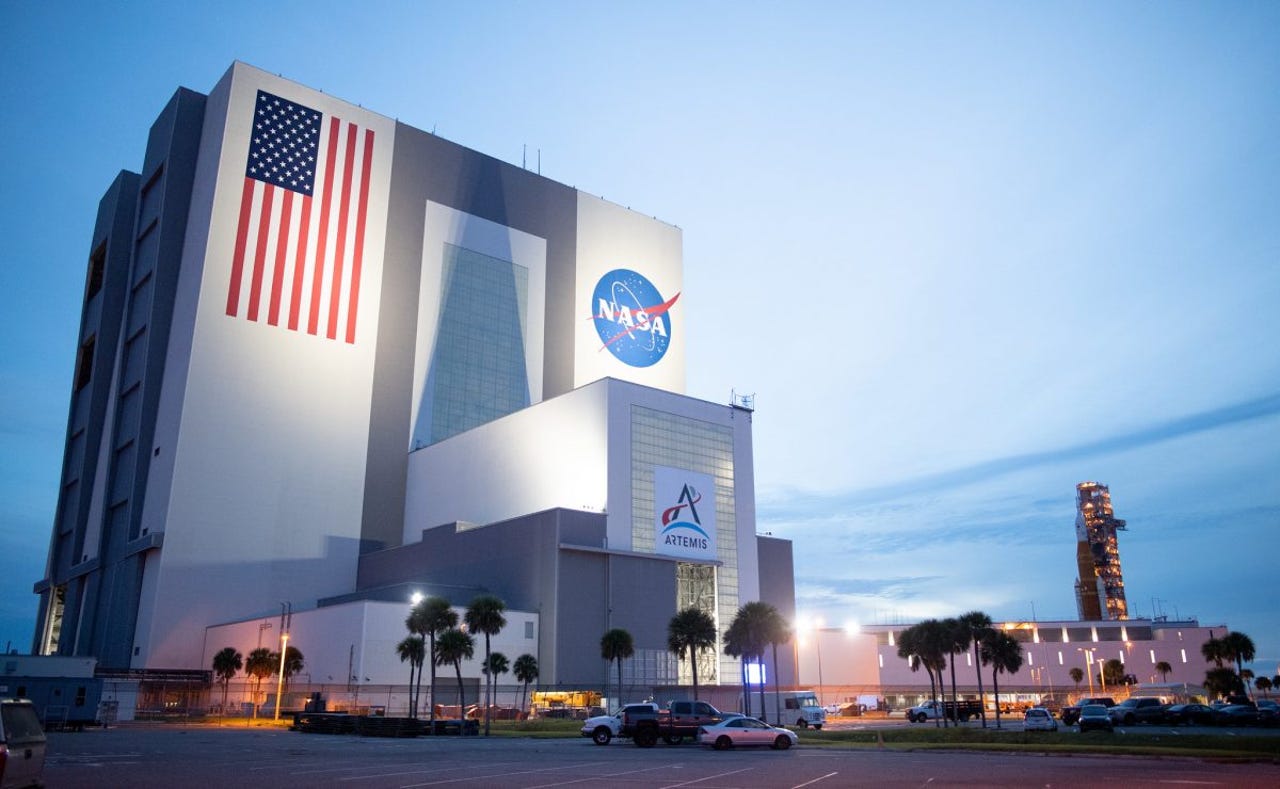
































NASA's Space Launch System (SLS) rocket with the Orion spacecraft aboard is seen atop the mobile launcher as it returns to the Vehicle Assembly Building from Launch Pad 39B, Tuesday, Sept. 27, 2022, at NASA's Kennedy Space Center in Florida.
Image: NASA/Joel KowskyNASA is preparing for its next attempt to launch the Artemis moon mission. Beginning at 12:01am EDT on Friday, the agency will roll out the Space Launch System (SLS) rocket and Orion spacecraft from the Vehicle Assembly Building (VAB) to Launch Pad 39B at the Kennedy Space Center in Florida.
The rollout is a major moment for the stalled Artemis mission, which now aims to launch on Nov. 14.
Also: What is the Artemis mission? Everything you need to know
The mission was initially slated to launch in late August, but the launch was scrubbed due to technical delays. A second attempt was also scrubbed due to technical issues. Then in September, NASA had to wheel the SLS back to its hangar as Hurricane Ian approached the western side of Florida's peninsula, disrupting what would have been the third launch attempt.
The Artemis program is a yearslong mission that will culminate with landing the first woman and person of color on the moon. It all starts with the Artemis I mission, which will send NASA's new rocket and spacecraft, unmanned, on a journey to orbit the moon. The purpose of the Artemis I mission is to ensure that the deep space exploration systems -the SLS and Orion spacecraft -are ready to send humans to the moon and beyond.
The November 14 liftoff is expected to take place within a 69-minute window that opens at 12:07 am EST. A launch on November 14 would result in a mission duration of about 25-and-a-half days with a splashdown in the Pacific Ocean on Friday, December 9.
Over the next week, NASA will be monitoring an area of low pressure in the atmosphere that could develop into a storm large enough to impact the launch.
If NASA needs to scrub the launch, its next opportunities for liftoff come on November 16 at 1:04 am and November 19 at 1:45 am. The agency would prefer a daytime launch, so it can get better visuals of the event. However, it's also running up against some deadlines.
There are a number of elements of the rocket that are on a "limited life list," NASA associate administrator Jim Free explained to reporters Thursday. Their guaranteed functionality is based on a set of assumptions that have to be re-tested after a certain period of time. The SLS boosters fall into that category.
One of the SLS rocket boosters wil have to be re-analyzed after December. 9, according to Cliff Lanham, senior vehicle operations manager for NASA's Exploration Ground Systems Program. Another one will have to be re-tested after December 14.
 Горячие метки:
3. Инновации
1. Космос
Горячие метки:
3. Инновации
1. Космос